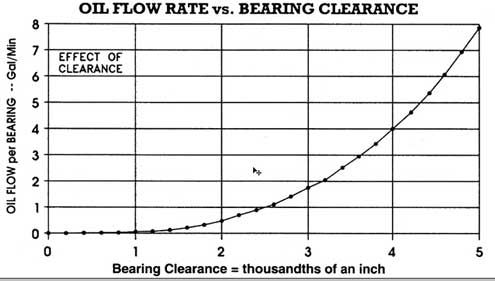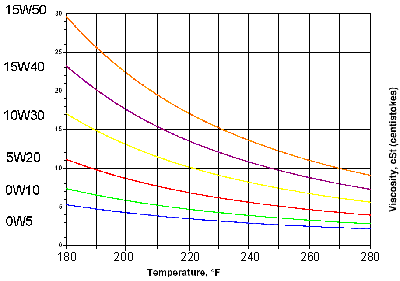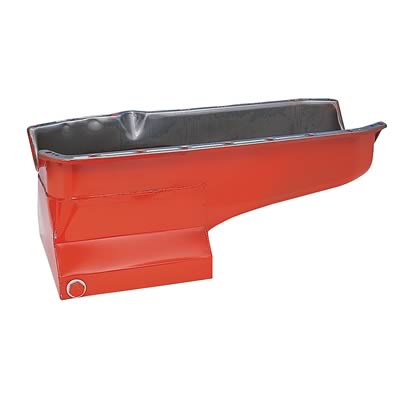"Has anyone succeeded in increasing their oil pressure by using a thicker oil? How much did it increase? I'm thinking of a change like 5W-30 to 20W-50, but it does freeze here in the midwest. BTW, I did check the gauge with another mechanical gauge and they are close to the same.
My oil pressure is lower than I like in a daily driver Suburban, and I'm thinking of ways to increase oil pressure without pulling the engine. So it is either trying thicker oil, or putting a high volume oil pump in with the engine still in the truck. The bearings are a last resort because when I changed the head gaskets, there was not even a noticeable lip on the cylinder walls and I could still see the crosshatching on the walls. It doesn't burn or leak oil. So the engine is in good condition other than the low oil pressure. "
viewtopic.php?f=54&t=1334
viewtopic.php?f=54&t=3536
viewtopic.php?f=54&t=6445
viewtopic.php?f=54&t=2187
viewtopic.php?f=54&t=64
viewtopic.php?f=54&t=615
viewtopic.php?f=54&t=2294
viewtopic.php?f=54&t=1800
viewtopic.php?f=54&t=2598
read the links above! it will be well worth the time and effort
you failed to mention the oil temperatures were talking about,you generally want to keep oil temps in the 180f-215f range with peak oil temps held below 235f
your gauge pressure is simply a way to measure the oil systems resistance to oil flow rates, larger clearances or thinner oil viscosity reduce the resistance to oil flow so pressure drops the higher the viscosity the thicker the oil and the higher the resulting effort to pump it thru clearances, the tighter the clearances the more flow is restricted so it results in a higher gauge reading.
oil can not be compressed and the oil pump spins at 1/2 engine rpm, thus the flow rate increases in almost direct relation to engine rpm, while the clearances remain rather constant, so oil pressure readings tend to go up as the rpms increase up to the point where the oil pump bye-pass opens to maximize oil pressure levels.
PRESSURE is not the most important factor, oil flow and its ability to lubricate and cool the moving surfaces and bearings increases up to a point with increased flow rates, how much the gauge pressure reading changes depends on both oil temps and engine clearances but the gauge should show an increased pressure with thicker viscosity oil, and the volume of the oil the pumps pushing, a band-aid fix is to install a high volume oil pump as the additional 20% of oil flow will make the gauge read higher and it will move more oil, thats not the same things as providing better lubrication in all applications


My oil pressure is lower than I like in a daily driver Suburban, and I'm thinking of ways to increase oil pressure without pulling the engine. So it is either trying thicker oil, or putting a high volume oil pump in with the engine still in the truck. The bearings are a last resort because when I changed the head gaskets, there was not even a noticeable lip on the cylinder walls and I could still see the crosshatching on the walls. It doesn't burn or leak oil. So the engine is in good condition other than the low oil pressure. "
viewtopic.php?f=54&t=1334
viewtopic.php?f=54&t=3536
viewtopic.php?f=54&t=6445
viewtopic.php?f=54&t=2187
viewtopic.php?f=54&t=64
viewtopic.php?f=54&t=615
viewtopic.php?f=54&t=2294
viewtopic.php?f=54&t=1800
viewtopic.php?f=54&t=2598
read the links above! it will be well worth the time and effort
you failed to mention the oil temperatures were talking about,you generally want to keep oil temps in the 180f-215f range with peak oil temps held below 235f
your gauge pressure is simply a way to measure the oil systems resistance to oil flow rates, larger clearances or thinner oil viscosity reduce the resistance to oil flow so pressure drops the higher the viscosity the thicker the oil and the higher the resulting effort to pump it thru clearances, the tighter the clearances the more flow is restricted so it results in a higher gauge reading.
oil can not be compressed and the oil pump spins at 1/2 engine rpm, thus the flow rate increases in almost direct relation to engine rpm, while the clearances remain rather constant, so oil pressure readings tend to go up as the rpms increase up to the point where the oil pump bye-pass opens to maximize oil pressure levels.
PRESSURE is not the most important factor, oil flow and its ability to lubricate and cool the moving surfaces and bearings increases up to a point with increased flow rates, how much the gauge pressure reading changes depends on both oil temps and engine clearances but the gauge should show an increased pressure with thicker viscosity oil, and the volume of the oil the pumps pushing, a band-aid fix is to install a high volume oil pump as the additional 20% of oil flow will make the gauge read higher and it will move more oil, thats not the same things as providing better lubrication in all applications



